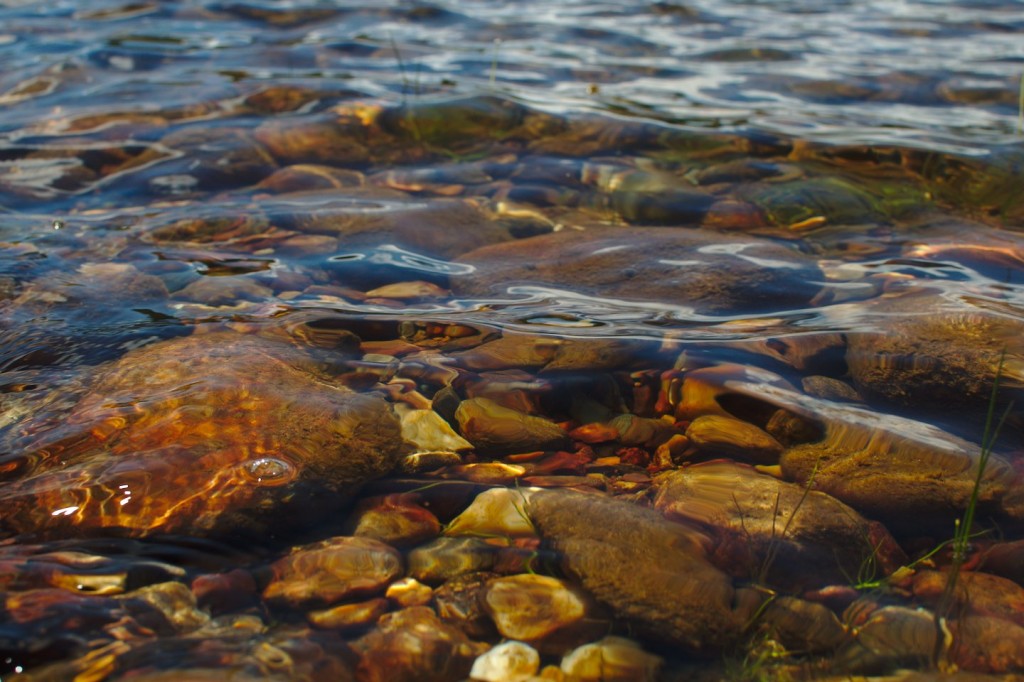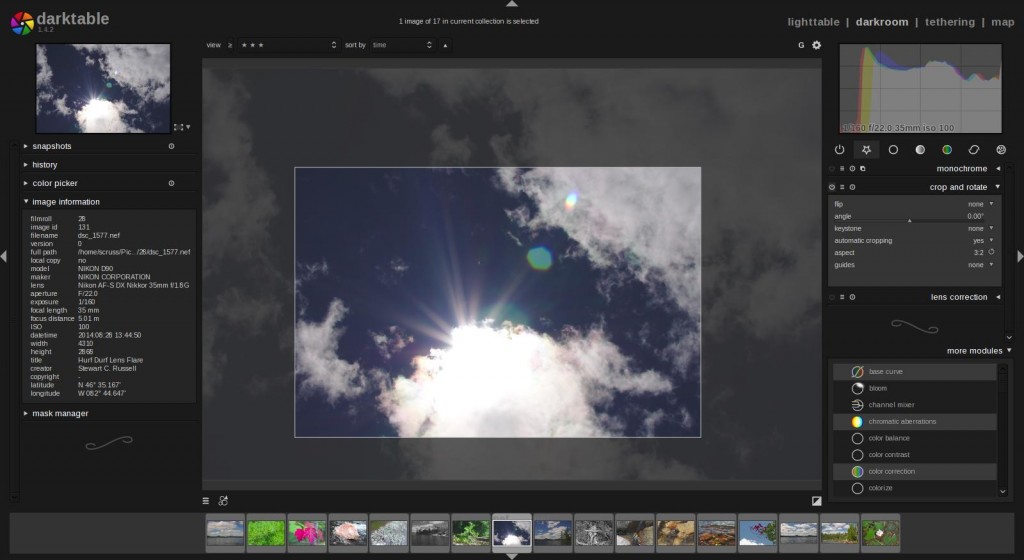
broken box is crying

work as if you live in the early days of a better nation


This little one was napping in the sun on the bike path.
 I’m really impressed with darktable, a raw photo workflow for Linux. Unlike Gimp, it uses floating point for all image processes, so it doesn’t get caught up in quantization error. It’s a non-destructive editor, too: it assumes your source images are like negatives, and any changes you make are only applied to the exported images. Darktable also has a very intuitive black and white filtering mode (where you apply a virtual colour filter to the front of the lens, and see the results in real time) and some very powerful geotagging features. I’m sold.
I’m really impressed with darktable, a raw photo workflow for Linux. Unlike Gimp, it uses floating point for all image processes, so it doesn’t get caught up in quantization error. It’s a non-destructive editor, too: it assumes your source images are like negatives, and any changes you make are only applied to the exported images. Darktable also has a very intuitive black and white filtering mode (where you apply a virtual colour filter to the front of the lens, and see the results in real time) and some very powerful geotagging features. I’m sold.
 It’s not immediately obvious how some of the features work, and it took me a few hours (and some reading of the manual — eek!) to get files to export as I wanted them. It’s not quite perfect yet — the map feature can become unresponsive if you click too much on image icons — but it’s definitely solid enough for my purposes.
It’s not immediately obvious how some of the features work, and it took me a few hours (and some reading of the manual — eek!) to get files to export as I wanted them. It’s not quite perfect yet — the map feature can become unresponsive if you click too much on image icons — but it’s definitely solid enough for my purposes.
More of my initial darktable attempts on flickr: A Day by the Lake.
The CamdenBoss Raspberry Pi Camera Enclosure (data sheet, suppliers: RPI CAMERA BOARD – RASPBERRY-PI – ADD-ON BRD, CAMERA MODULE, RASPBERRY PI | Newark element14 Canada, MCM Electronics Carbon Raspberry Pi Camera Case 83-15493 – Micro Center) comes with no instructions. Maybe the lighter coloured ones are easier to work out, but on the faux-carbon one I bought, the little guide slots the board has to slide into are very hard to see.
Given all the warnings about static, I was a little too careful trying to install the camera into the housing. Slip open the camera case, then put the board in at an angle with one side in one slot, then (with a bit more force than I’d like) spring or flex the housing so the other side of the board can click into place. You have to make sure that both sides are fully engaged in the slots before the cover will slide back on.
So here it is, all set up:
Oh, sorry; should’ve warned you about the bright pink case and the awesome/appalling Lisa Frank sticker. The sticker is in no way to cover up where I cut the wrong place for the camera connector, nope nope nope …
Tallgrass Pixels | photography by Don Palmer is rather good. Don (W0PSK) lives near the Flint Hills in Kansas.
I’m taking a Canadian Solar Institute course at Earth Rangers. Mario, the instructor, has quite a nifty photoblog: Mario Borsato – Nature Photo Blog. Here’s a close encounter with a timber wolf he had:
Mario’s company is Soleil Power Canada, if you’re needing solar installation or training.
(image copyright 2010, Mario Borsato.)
I went to Photosynth, and saw this:
![]() Bullets are also small and fast, but I don’t plan to install any of those soon, either.
Bullets are also small and fast, but I don’t plan to install any of those soon, either.
| Camera: | NIKON D90 |
| Exposure: | 1/400 |
| Aperture: | f/8.0 |
| Focal Length: | 35 mm |
| Exposure Bias: | 0 EV |
| ISO Speed: | 200 |
| Flash: | No Flash |
Unless you really like spiders, I don’t recommend you see my picture spider in the basement.
I see that you can now view WWII historical imagery in Google Earth. Yes, there’s Dresden, Hamburg and Warsaw. But what about Clydebank, Coventry, London? Yes, it wouldn’t have been allied imagery, but we were bombed too.
 Talk about displacement activity: in the week or so before selling the house and upping and off to Canada, I scanned and converted the Weston Master V Exposure Meter and Invercone Instruction Book to HTML.
Talk about displacement activity: in the week or so before selling the house and upping and off to Canada, I scanned and converted the Weston Master V Exposure Meter and Invercone Instruction Book to HTML.
I’ve recently taken up film photography again. But processing is expensive.
To have 24 exposures processed and scanned at 6MP at Downtown Camera costs $12 + tax. That’s a pretty good price for black and white.
I can process at home (yay stinky toxic chemicals!) for a bit less. I’d need to buy a scanner, and the cheapest film scanners come in at around $300.
What to do, what to do?